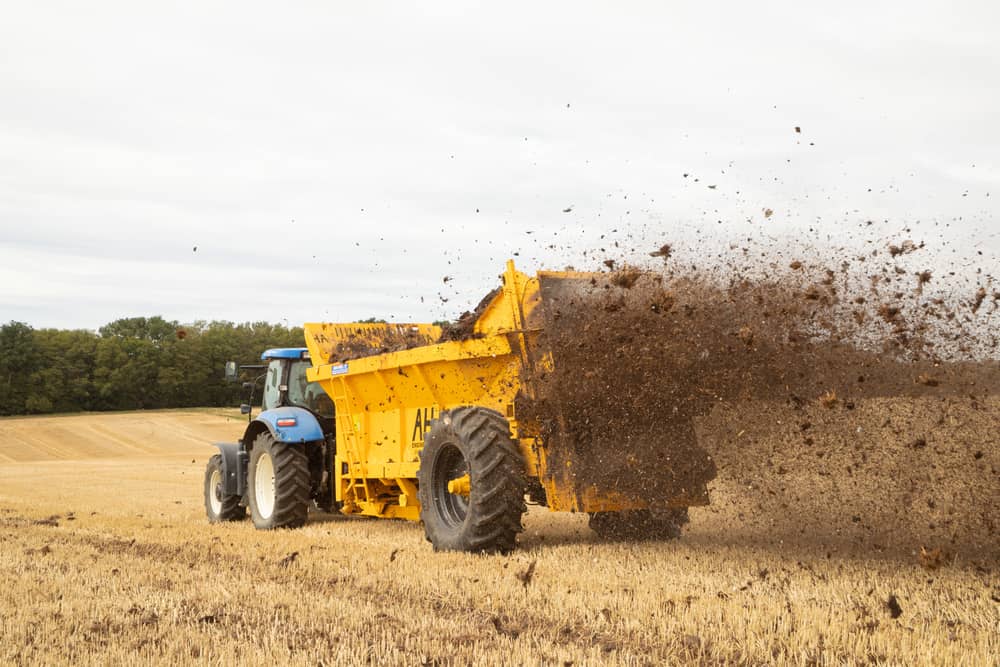We’re dealing with beetle, unseasonal weather and confusing, costly messages from the EA, argues Dorset NFU County Chair George Hosford.

Where have all the larvae gone?
There we were, a few days ago, hunting around in flowering rape for evidence that there had been any flea beetle attack this season. Eventually we found one larva embedded in a stem – far short of anything to worry about.
Since the Europe-wide ban on neonicotinoid seed treatments in 2013 we have tried countless methods to outwit the little devils which have decimated the UK rape crop over recent years. The flea beetle is a formidable pest. The adult will attack the tiny emerging plants shortly after sowing in autumn, and on many of the plants that survive, the beetle lays eggs, which eventually hatch and then attempt to burrow into the stems as the plant grows in late autumn and into early spring. They can weaken plants considerably, and when you think you have escaped the autumn onslaught, you find patches of plants in spring where they have given up, having been hollowed out.
We have tried applying smelly manures, sown companion crops to distract them, sown early, even grazed the rape off with sheep in the hope that the sheep actually eat the larvae in the plants.
Overall larvae numbers on this farm were lower in 2021 than 2020, and appear to be lower still this year, the fourth since forsaking insecticides. Can we dare to believe that beneficial predators are making a comeback, now we aren’t repeatedly killing them off with increasingly unsuccessful chemical attempts to control the
flea beetle?
We know the drill
In a vain hope to encourage a bit of rain in May, is it appropriate as I write this on the 23rd of April, to have a good moan about the very dry, cool and windy, weather? Our spring barley is seriously struggling, it was sown into rapidly drying seedbeds, which in spite of our intentions to direct drill, had to be cultivated to make a half decent seedbed. A return to the field with a heavy flat roll this week has been required to try to encourage some late germination where there are gaps, and to conserve what little moisture is there.
The spring beans, usually more sensitive to lack of moisture than most crops, are holding out at he moment. We managed to direct drill some of them into the kinder soils, and in two small fields we are using them as a
break with which to improve some worn-out permanent pasture. Direct sowing the beans into the turf has so far worked well: leatherjackets, that would otherwise have demolished a cereal crop, are not interested in beans, and will have hopefully hatched and left the field before we sow a wheat crop in the autumn, and then establish a long term herbal mixture in the following year. Digging down below the turf finds surprisingly moist soil, protected from the wind and sun by the old turf.
A urea heap?
Defra have announced some long-awaited answers for farmers recently: firstly, their response to the urea fertiliser consultation that they issued a year ago, which had left farmers who are accustomed to using urea
fertiliser, with no idea whether they could buy, let alone use any urea this year.
The decision means that previously announced restrictions on the use of urea are being postponed whilst the industry tries to cope with the enormous rise in fertiliser prices that has occurred in the last few months.
Urea has traditionally been used as a cheaper form of fertiliser than the more widely-used ammonium nitrate, but a major drawback is that it leads to the emission of more ammonia into the atmosphere than
AN. Both contribute to global warming, but urea is worse.
The decision seems likely, in the longer term, to lead to a regime which will restrict urea use, force farmers to adjust the timing of applications and to only apply it in conjunction with an inhibitor, to help reduce emissions.

Costly storage needed?
The second announcement relates to the ‘Farming Rules for Water’, devised and policed by the Environment Agency (EA), which aims to control pollution from farmland to waterways and ground water. These rules have been contentious from their inception in 2018, when the Environment Agency (EA) announced a clampdown on manure spreading in the autumn.
The implication was that farmers who produce organic manures would not be able to apply them to any more than a narrow range of permitted crops in autumn – the time when traditionally many millions of tons of
manures are applied to newly sown crops. Lots more storage capacity would have to be built to carry it
safely through until it could legally be applied in the spring.
There are many reasons why this draconian ruling didn’t make sense, and I plan to return to this subject
soon, but to put it concisely, DEFRA have asked the EA to look again at this, and work more closely with farmers to make the system more sensible.
No farmers intentionally allow their manures to get into water, they are far too valuable to do that. A confrontational approach helps no-one, and I very much hope now that we can move forward with an environmentally responsible, and economically justifiable blend of common sense and practical regulation.
George Hosford: Dorset NFU County Chair
Sponsored by Trethowans – Law as it should be

